Latest News
Kitchen Chat and more…
Kitchen Chat and more…

Credit: Paul John
Scotland is considered the motherland of single malt whiskies and it is where anyone who is fond of whisky will head to. Ireland is the other “flagship” location for anyone who loves whisky. Since the 1990s, however, more and more whisky distilleries are popping up in places that are outside of the United Kingdom. The most famous ones are, of course, Japan, and to some extent, Taiwan.
Do you think about India when you think whisky? Probably not. Nonetheless, the rise of Indian single malts started with Amrut, and now Paul John is catching up!
John Distilleries opened in 1996 in Bangalore India. The founder, Mr Paul P John, set out to win the market with a variety of excellent products, including whisky, brandy and wines. In 2008, Paul John Distillery opened in Goa, India. From the onset, Mr Paul P John wanted to set a high standard for the whiskies that came out of the distillery, so he chose his barley, yeast and water from local sources. Paul John Distillery is famous for its use of the six-row barley, which is harder to process for whisky production. The high standards of the distillery produce excellent Indian Single Malts that are enjoyed over the world today.
As the Covid-19 pandemic rages on, there is no way we could have travelled anywhere. So the importers for Paul John whiskies decided to bring the distillery to us instead. The Whisky Store worked with the distillery to have their Visitor Centre Manager bring us virtually to the distillery and invited us to see the magnificent building that they have.
I was very excited to attend because I personally enjoyed Paul John single malts!

The Visitor Centre Lobby (Credit: WhiskyStore’s Zoom Session)
We started the tour with a bird’s eye view of the magnificent visitor centre at Paul John Distillery. The company built the distillery after the Portuguese style of mansions. Some visitors even assumed that the visitor centre bought over an old Portuguese mansion! The inside of the visitor centre is huge and airy. The symbols of India, as well as the style of furniture, are aplenty within. A visitor walking into the visitor centre will definitely feel like walking into a grand Indian palace of sorts.
Visitors at the distillery will be treated to a film in a small theatrette first, where they get a sense of the history of Paul John Distillery, before walking down an aisle full of awards and certifications. The recognition of premium whiskies dot the walls of the aisle, showing off the skills of the craftsmen found at Paul John.
The excitement built up as we “walked” into the production site. Our guide, Pankaj, first brought us to the granary, where they store the barley. Sacks and sacks of barley can be seen as the background as he walked us through the three ingredients to making whisky – barley, yeast and water.

The bags of barley at the background with our handsome guide in the foreground. (Credits: WhiskyStore’s Zoom Session)
Pankaj explained that Goa is not suitable for the growing of barley, and all their barley is grown in the Northern part of India, at the foothills of the Himalayas. Paul John uses a unique 6-row barley varietal that gives a thicker husk which, of course, make it more difficult to mill and use in whisky production. As we know, almost all other whisky distilleries in the world use the 2-row barley. The reason for using the 6-row barley is simple. Thicker husks mean more protein in the barley, which produces the signature cereal notes, buttery flavour and oily texture that you find in Paul John whiskies.
Paul John does not do the milling and malting of the barley itself. The distillery outsources the process to a local company which do all the work for them before delivering the ready-to-use malted barley to the site at Goa.
The interesting fact here to note is that Paul John buys peat from Scotland for all their peated barley. The peat comes from both the Highlands and Islay. The different barley is then used for different expressions of whiskies, which we will go into later on.
The milling ratio at Paul John is similar to many Scottish distilleries – 70% grist, 20% husks and 10% flour.
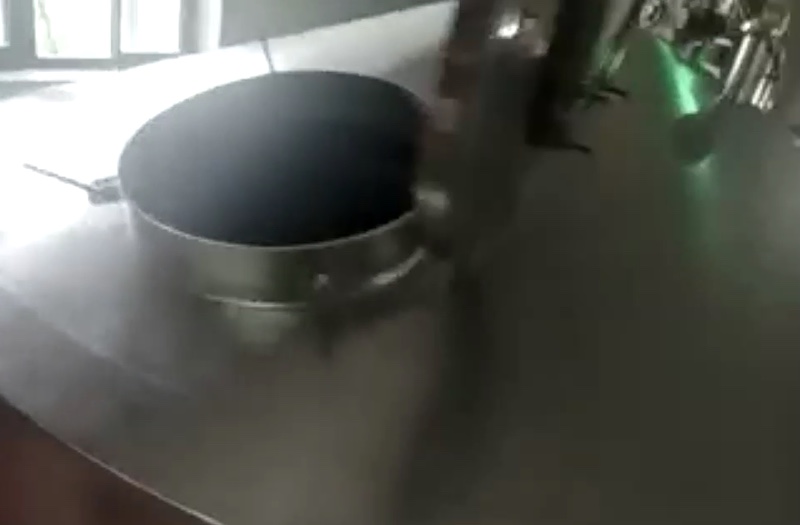
The Mash Tun (Credits: WhiskyStore’s Zoom Session)
The distillery uses a combination sort of mash tun. Pankaj calls it a combination of the traditional mash tun and a lauter tun. I am hazarding a guess that it is a semi-lauter tun, but that would probably need to be checked.
I find the mashing process rather interesting as Paul John uses four batches of hot water for mashing instead of three. It probably got something to do with the higher proteins found in the 6-row barley, but I could be wrong. The team uses two tons of barley and 12 thousand litres of water for mashing in their mash tun. The water is delivered in four batches, the first at 65 degrees Celsius, the second at 75 degrees Celsius, the third at 85 and the last at 95. The sugary liquid obtained from mashing (called wort) is then transferred to the fermentation tanks.
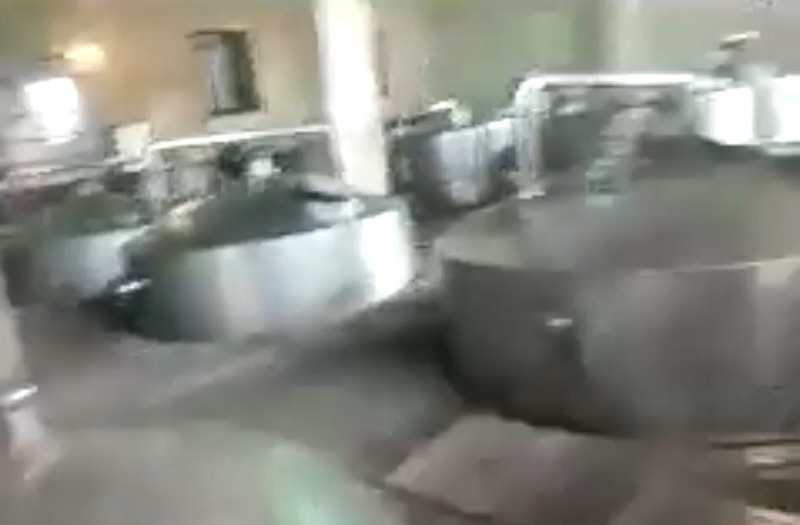
Stainless Steel Washbacks (Credit: WhiskyStore’s Zoom Session)
Paul John has 14 stainless steel washbacks with volume ranging from 16,000 litres to 18,000 litres. In a usual cycle, 11,000 to 12,000 litres of wort goes into the washbacks to ensure sufficient space for fermentation to happen. The distillery uses distiller’s dry yeast as it performs the best under the climate at Goa.
Paul John ferments their wort for 50 to 60 hours and once the fermentation is done, the wash sits in the washback for another 10 to 12 hours before they pipe the wash to their copper stills. The wash, at around 6 – 6.5% abv, is fruity, with notes of pineapples and jackfruits.

Copper Pot Stills and Condensers (Credit: Paul John)
The aspiration to distil excellent single malt whiskies in Goa drives Paul John to install premium, locally-made copper pot stills when they opened in 2008. Over the years, the distillery expanded and more stills are added. The wash is doubled-distilled, once in the 12,500 litres wash still and then again in their 6,000 litres spirits still.
Pressurised steam heats up the stills for the distillation and the wash converts into low wines in the wash still. The low wines increase the alcohol percentage to 17-19% abv. To create more flavours, Paul John uses condensers and coolers to ensure high reflux during the distillation process. In the second distillation, the alcohol percentage rises to above 70% abv.
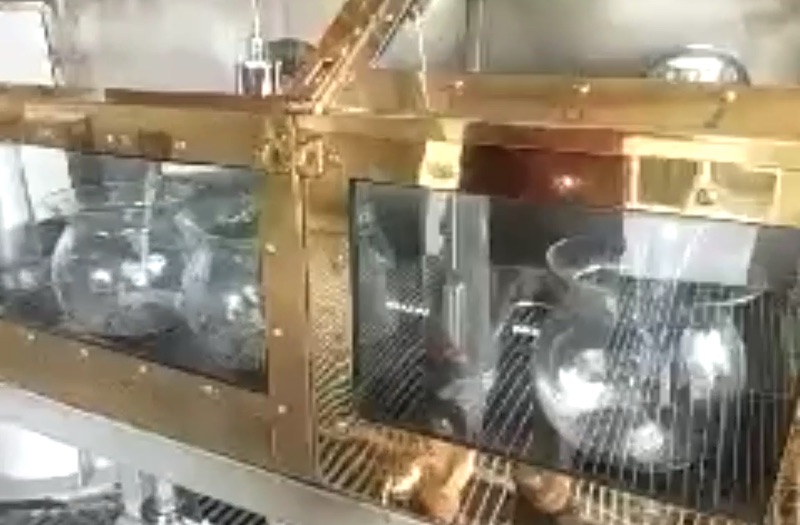
The Spirits Safe (Credits: WhiskyStore’s Zoom Session)
The heart of the cut is between 65-70% abv but the number is not the most important. Distillers must taste the new make before they decide to make the cut. Once the alcohol percentage drops below 65%, they stop collecting the liquid as their new make. The flavour profile of the new make is still fruity, with apples, banana and pineapples taking dominance.

Racking System of Cask (Credits: WhiskyStore’s Zoom Session)
There are 20,000 casks maturating on-site at Paul John Distillery. They have three warehouses to store them. One of them is underground, while the remaining two are above ground. As you can see in the above (not so clear) picture, the warehouse that we went to show a racking system that is similar to how American distilleries store their bourbon. Pankaj explained that the flavours vary from cask to cask due to the way they store the casks, which echoes the Bourbon industry in the USA.
There are many experiments going on at Paul John. They use a host of different casks, ranging from typical bourbon casks to Oloroso, Pedro Ximenes (PX), Virgin oak and fresh Limousin Oak casks. Customised casks from Casknolia also boast Tawny Port casks. Our guide shared that all the casks are only used twice before they are either renewed or sold.
The casks came from various places in the USA and Europe. One little nugget of information that I like to share is that Paul John buys bourbon casks from Heaven Hills. Now, I am not a bourbon person, but I really enjoyed Heavens Hill bourbons after a friend gave me a sample to try. It’s flavourful without being way too sweet like many of the other bourbons. I would really love to try the Paul John expression that uses the Heaven Hill’s bourbon casks when they are bottled.
I wanted to give angel share a little spotlight here because of the hot climate at Goa. Angel share is up to 8-10% a year in India, which is pretty high when you compared that to Scotland at 2-3% a year. Whisky matured at Paul John ages faster, so whisky that matured for 4 years in Goa is almost the same as whisky that matured for 16 years in Scotland. Importantly, the acceleration also ensures that the flavours build up faster in the cask.
Paul John Distillery matures their core range of whisky for a minimum of 5 to 6 years before bottling. They have a recent whisky matured at 4 years and have received acclaim for it. However, due to the young age of their whiskies, Paul John chooses not to put the age of the whiskies on the label to prevent the biases of age from the consumers.
We went back to the visitor centre after the warehouse tour and tasted five whiskies. Of course, we are drinking them from home! The five expressions are Nirvana, Brillance, Christmas Edition 2019, Edited and Bold. Out of the five, I love the Brillance best, followed by Bold and Edited. Nirvana is mild and nice as a starter and the Christmas Edition 2019 is perfect for a long night of enjoyment.
I would like to give a special mention to Brillance, which is matured for 5 to 6 years, in both first and second filled bourbon casks. The flavours are balanced on both sweet and oaky, making it the perfect fit as your daily dram.
Both Edited and Bold are peated, with Edited using Highland peat and Bold using Islay peat. As you can see from my preference, I have a thing for Islay peat and lesser for Highland peat. Nonetheless, both of them are good drops!
We hope you have enjoyed our story on Paul John and learned a little more about Indian single malt whiskies. We do apologise for the bad photos as we had to screengrab them from the Zoom sessions! It’s the most authentic photos that we want to portray that made us do screengrabbing!
If you would like to purchase bottles, head over to The Whisky Store and grab them!
Arran is the first (legal) distillery on the Isle of Arran since Lagg distillery closed in 1837 which was highly revered back then. Arran distillery marks the revival of whisky-making on the Isle of Arran, so let’s dive into how Arran distillery all started!
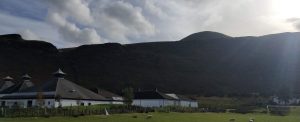
Photo of Lochranza distillery in the morning. Taken in 2018.
The late Harold Currie who left us in 2016 held many titles, and amongst those titles, he was the Managing Director of Chivas Bros and saw the merger of Pernod-Ricard. After his retirement, he was approached by David Hutchison, who is one of Glasgow’s best-known architect. Moreover, he has ancestors from the Whiting Bay village of Arran and owns property on Arran. With the connections and experience Currie possesses, along with the technical ability for David to help design the distillery, they decided to start a distillery on Arran! In 1991, Harold Currie and David Hutchison set up the company called the “Isle of Arran Distillers Ltd” with a head office in Pathhead, Edinburgh.
One of the first things to decide is the location. The location determines the cost and water supply, and therefore, the maximum capacity of the distillery. In addition, certain locations might pose limitations on the area of the distillery takes up.
The Isle of Arran has been described as ‘Scotland in miniature’ due to its geology and topography. The island has beautiful granite peaks and gorgeous glens around the north that is reminiscent of the Highlands and juxtaposes with the green arable lands in the south that resembles the Lowlands. Therefore, on the Isle of Arran, one location might differ significantly from another.
A distillery requires a good water source of a certain quality for its operations. The pH, mineral content, supply and general cleanliness are some of the essential factors. On that basis, Blackwaterfoot, Whiting Bay, Corrie and Sannox were struck off leaving Lochranza that can provide good quality water.
In November of 1991, the team approached the local Town Council for approval. However, this proposal incurred some harsh resistance from the residents of Lochranza. Residents voiced concerns over potential pollution and the over-industrialisation of their town. But after a bit of compromise and a pinch of humour, the majority of residents had their worries eased. The residents also recognised the benefits the distillery will bring to the island as a whole.
Earlier, the company came up with an estimated cost of the distillery to be around 1.5 million pounds. However, the costs quickly escalated to 2.5 million pounds, and the company needed more capital. In 1993, the company offered a £450 Bondholder Scheme to the public, offering 6 bottles of blended Arran Whisky after 5 years and 6 bottles of Arran Single Malt after 8 years. There was even a 10% discount for anyone who purchased before 6th December 1993! The company launched another offer of single malt ‘units’ which was defined as a dozen bottles of 70cl bottles. By autumn of 1994, the sale of bonds accounted for 60% of start-up capital. Fortunately, Currie managed to gain more investors and shareholders through his connections. This allowed the construction to begin in 1994.
The construction to be temporarily halted due to some golden eagles which were spotted nesting near the site. However, they finished their construction in June of 1995. During the official opening in August, Harold Currie addressed the crowd, amongst it was a much younger Jim Murray. Surprisingly, the eagles flew past the distillery on that day. Maybe, it was a good omen!
Gordon Mitchell was Arran’s first master distiller! He started his whisky career at Lochside distillery and later joined Cooley distillery in 1989 up till December 1994. As the distiller of a completely brand new distillery, he designed Arran’s new make spirit during the pre-production testing before the official first still runs on 29th June 1995. The quality of the spirit character astounded John Lamond, Master of Malt and Keeper of the Quaich. Gordon continued for over a decade, making Arran whisky and fulfilling the Bondholder schemes. Gordon also had a hand in distilling experimental Arran whiskies, like peated Arran and bere barley, both in 2004.
In August 1997, the Visitors Centre of the distillery was opened and graced by Queen Elizabeth. The distillery gave two casks to the Queen for Prince Harry and Prince William. The opening of the visitor centre was also greeted by big names actor Ewan McGregor, Whisky writer Michael Jackson, and Takeshi Taketsuru, nephew and adoptive son of Japanese Whisky Legend Masataka Taketsuru.
In 2001, Isle of Arran Distillers became a patron of the World Burns Federation. This later saw the launch of the Robert Burns blend and single malt! Around this time, Arran also did many cask finishes using casks that once contained Calvados, Cognac Marsala and port. Later, a Champagne Grand Cru cask finish was also introduced!

Wefie with Mr James MacTaggart in 2018!
James MacTaggart took over Gordon Mitchell as Distillery Manager of Arran in 2007. James had worked at Bowmore distillery for 31 years and played a part in some of the best Bowmores revered by Bowmore fanatics. At Lochranza distillery, he handles the quality control, buys quality casks for whisky maturation and chooses select casks for bottling.
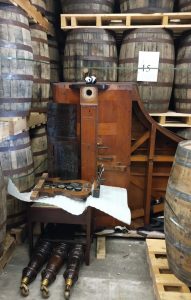
A piano belonging to James MacTaggart, in the warehouse. Photo taken in 2018.
In addition, he determined the malting specifications at Glen Esk maltings so that the barley Arran distillery used could be up to his standards and expectations. He started requesting for peated barley as well, at 20ppm and 50ppm. That effort would bear fruits 3 years later when Arran distillery launched the first release of Machrie Moor, a peated Arran!
In 2019 James moved on from the position of Lochranza Distillery’s Master Distiller to the Director of Production and Operations which oversees both distilleries. In his place, David Livingston took over the role of Distillery Manager. James was also responsible for mentoring and getting Graham Omand to take up the role of Lagg Distillery Manager.
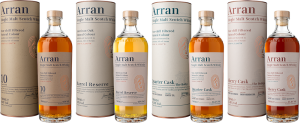
Photo of Arran Whisky Core Range from 2019. Photo Credits: Arran Whisky News
Arran distillery has come far from doing just cask finishes in the early 2000s. There is a core range featuring a 10, 18 and 21 age statements, a revamped cask finishes range, various limited editions, a lovely cream liqueur and single casks bottlings. The core range bottles were also rebranded in 2019, with the cask finishes range expected to follow suit!
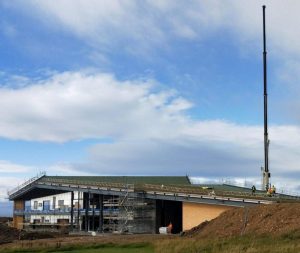
Lagg distillery under construction back in 2018.
In 2019, Arran Distillers revived Lagg distillery, and it would serve to produce peated whiskies for the company and allows Lochranza distillery to focus on unpeated whiskies. Due to Lagg distillery being on the south end of the island, it is below the highland boundary fault line, and it is technically considered a lowland whisky. That leaves the Isle of Arran with both a highland and lowland distillery. Perhaps Arran should become its own whisky region!
During the construction of Lagg distillery, the team also started planting apple trees in the field near the distillery. To the date of this article, close to 3000 apple trees have already been planted. It is likely that whisky might not be the only thing that will be made at Lagg distillery!
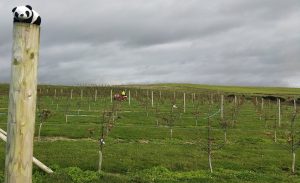
New wee apple trees growing near Lagg distillery. Taken in 2018
To continue the culture of experimentation, Isle of Arran Distillers has announced plans for a blended malt by putting new make spirit of both distilleries into various casks. This “Project North & South” will be maturing until it is deemed ready! According to Global Brand Ambassador, Mariella Romano, in 2020, Arran also has some local barley casks ageing in the warehouse. In another Facebook live video, the comments indicate that there is Champagne cask in the works!
This article contains a lot of recorded history from the book “The Arran Malt: An Island Renaissance” by Neil Wilson. If you wish to know more about the history of Arran, you can get the book at the distillery website or from amazon. Special thanks again to Euan Mitchell, James Mactaggart and the wonderful people at Arran for that unforgettable time in I spent on Arran in 2018.
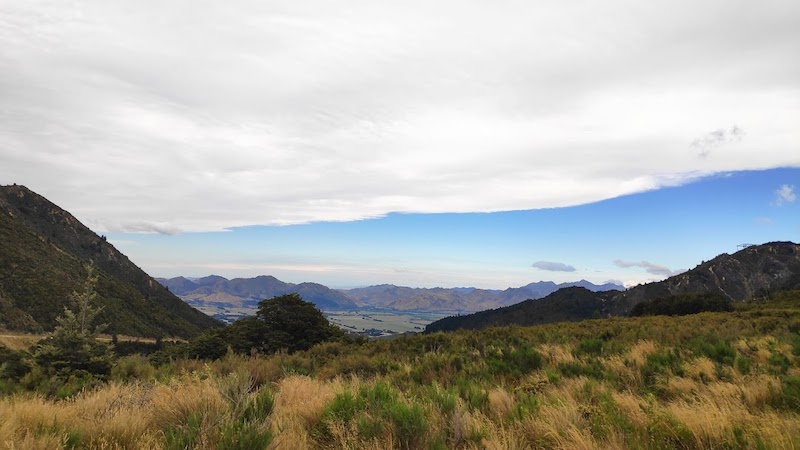
Photo Credit: Greig Price
Most people imagine New Zealand to be a clean, peaceful country with a large population of sheep. To those who had been there, fond memories of food, Hobbiton, clear blue skies linger, and for the drinkers, sauvignon blanc. You may have tried New Zealand wine, but have you tried New Zealand whisky?
What is New Zealand whisky and does it even exist? To understand the story of New Zealand whisky, we need to go back to the history of New Zealand itself.
Aotearoa (land of the long white cloud) was a country covered in forests and abundant birdlife. The Maori people settled there and the British later colonized it. The resulting interactions between these two peoples influenced later generations and whisky production. New Zealand was seen as the final frontier for the British colonial masters. Creating a new nation, the migrants wanted a society unbound by the rules of the countries they left behind. The Maori culture values water and land, and these values progressively manifest themselves into the thinking of the new settlers.
The peoples of New Zealand realised the importance of nature and the need to protect it quickly. They enacted new legislation to protect the natural resources for future generations. With this, a growing awareness of where people lived, the food they ate and the water they drank began in earnest. Therefore, New Zealand was spared the blight of heavy industries, and the water quality benefited from it.
For wine drinkers, location is everything, and to scotch drinkers, the mention of Islay will conjure up images of peat, smoke and brine. For New Zealand whisky, the inhabitants, terrain, and scarcity of available resources heavily influence the production. The new colonial arrivals brought with them a rich history of distilling, particularly the Irish and Scots. It wasn’t long before a thriving unregulated “moonshine” industry sprang up, with reports of whisky being made as early as the 1830s.
Onerous government regulations combined with prohibition and world wars delayed large scale commercial whisky production until 1969. The behest of Scottish banks to quell nascent competition (See the Pattison Crash) was largely a part of the reason. In 1969, the now-defunct Willowbank distillery sprang up. Fittingly, Willowbank was located in Dunedin (Gaelic for Edinburgh), the most Scottish city in New Zealand. A statue of the Scottish poet, Robert Burns still resides in the centre of the city. Dunedin is a coastal city surrounded by misty hills with a Scottish climate. It was a perfect location for the production of high-quality New Zealand whisky.
Initial production requirements which called for the use of Scottish peat, water and barley were not practical due to the distances and costs involved. Locally sourced ingredients were used instead. The whisky received mixed review – “It’s palatable, just not Scotch”.
The Willowbank distillery produced blended whisky under the Wilson and 45 below labels, and a single malt named Lammerlaw. As with all single malts, the distillery gave it a meaningful name after their water source – the Lammerlaw mountain ranges. There are also lots of plains, where farmers grow the bulk of New Zealand barley during the long, hot and dry summers.
In 1980, Seagram took charge of operations after a change of ownership. Lammerlaw single malt gained a reputation as a quality single malt whisky as a result. Foster’s brewing took over in 1997, resulting in Willowbank getting stripped of its assets. Its pot stills went to Fiji for the production of rum. Given the “taste” of Foster’s beer and their lack of foresight, it is somewhat ironic that the stills from Willowbank have gone on to produce highly sought-after Fijian rum.
With the distillery closed, there were over 400 barrels of whisky that were sitting around, unwanted. In 2010, these barrels found their way into the hands of The New Zealand Whisky Company and Thomson Whisky. Both companies released bottlings from these barrels successfully. Noted whisky writers, Jim Murray and Charles Maclean, further attested to their quality and the whiskies won awards at major international competitions. The current oldest release is a 30-year-old single malt, a testament to the staff at the sadly closed Willowbank.
Thomson Whisky was quick to realise that their barrels would not stay full forever, and they need a new source of whisky. This spurred Thomson to start producing whisky. A new batch of distillers, such as Workshops and Cardrona, also started whisky production. New Zealand whisky producers focused on best practices in small batches using locally-sourced ingredients. For example, Workshops Whisky, who built their still inhouse and sourced their water from an onsite well direct from the Southern Alps is a success. Thomson Whisky, who have used locally-sourced peat, applied Manuka tree smoke to the barley and currently using ex-local pinot noir barrels for ageing.
So to summarise the points made earlier, New Zealand is a country where its inhabitants used the physical isolation and environment to make whisky. Using the best local ingredients where possible, with time-honoured techniques, they make whiskies that are light and floral in character. With future releases, this may no doubt change, especially with wider distribution starting to occur. Sustainability and quality over quantity are paramount, which in the coming years, New Zealand whisky will start to gain more attention as a result of this approach.
Greig Price is a native of New Zealand who has lived overseas on and off for the last twenty years and the last 12 in Singapore. Whenever this kiwi is homesick, he’ll seek out pies, potato chips or pinot noir. Or generally, anything else alcoholic from the land of the long white cloud and then bore you with why it tastes so great
11311 Harry Hines Blvd
Dallas, TX, United States
(555) 389 976
dallas@enfold-restaurant.com
